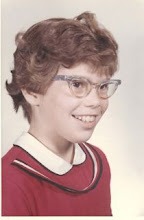Please welcome today's guest blogger, Valerie Stein. Valerie Stein has been Library Media Specialist for the past 10 years at Soundview School in Lynnwood Washington.
 |
| Valerie Stein |
Growing Powerful Kid Readers: Picture Book Conversations
For the past ten years, I’ve been very fortunate to run the library in our small PreK-8th grade independent school, and to feed my passion for helping to create lovers of books. For me, growing a reader begins with conversation about a book. I’ve discovered the importance of acting on these three things when I share a reading experience with my students:
- Put books I’ve read and loved in students’ hands, as well as books I think they will love
- Help students find language to express personal opinions, by asking carefully chosen open-ended questions
- Listen to their words and observe their reactions during a read aloud
Helping young readers find their own place in the world of books helps to keep them reading, and the act of reading frequently serves to build their reading stamina. If kids are able to express to others what it is they do (and don’t!) enjoy about a book, they become the owners of their reading lives. “Providing students with the opportunity to choose their own books empowers and encourages them,” says Donalyn Miller, author of The Book Whisperer, a book I highly recommend.
Giving students the language to express personal opinions about their choice takes them even farther. When they come to know what draws them into a book, and what keeps them there, they are able to seek help from other readers (adult or otherwise) in choosing books which both nourish and push them.
In addition to the three points above, few tools are needed to structure development of conversations about books. Most important for me in getting started is any collection of good picture books, especially a mix of fiction and non-fiction; artwork plays a big role in our conversations about personal tastes in format and style, so a variety serves best. I use picture books for all ages because they work so well in the hand and in the moment. Conversation quickly reaches a deeper level with a book that begins and concludes before our very eyes; this is important in our limited time together. One example of a collection I use is our state’s picture book award list, but any varied collection of quality picture books will do.
An open mind is also a critical tool in giving students voice and choice. Whenever we share a book, I must watch and listen, and remember my key points from above. I can tell when students are engaged, and I know what I find personally appealing, but my goal is to discover what makes an individual “click” with a book. This means that I set aside my own taste and work to understand and respect another’s.
In the end, my most important task is to keep good conversation going around good books; this is what I’ve found really helps each student grow as an individual reader, thinker and questioner.
You can visit with Valerie on Twitter and on Goodreads. She also keeps a blog called "The Best of It."





No comments:
Post a Comment